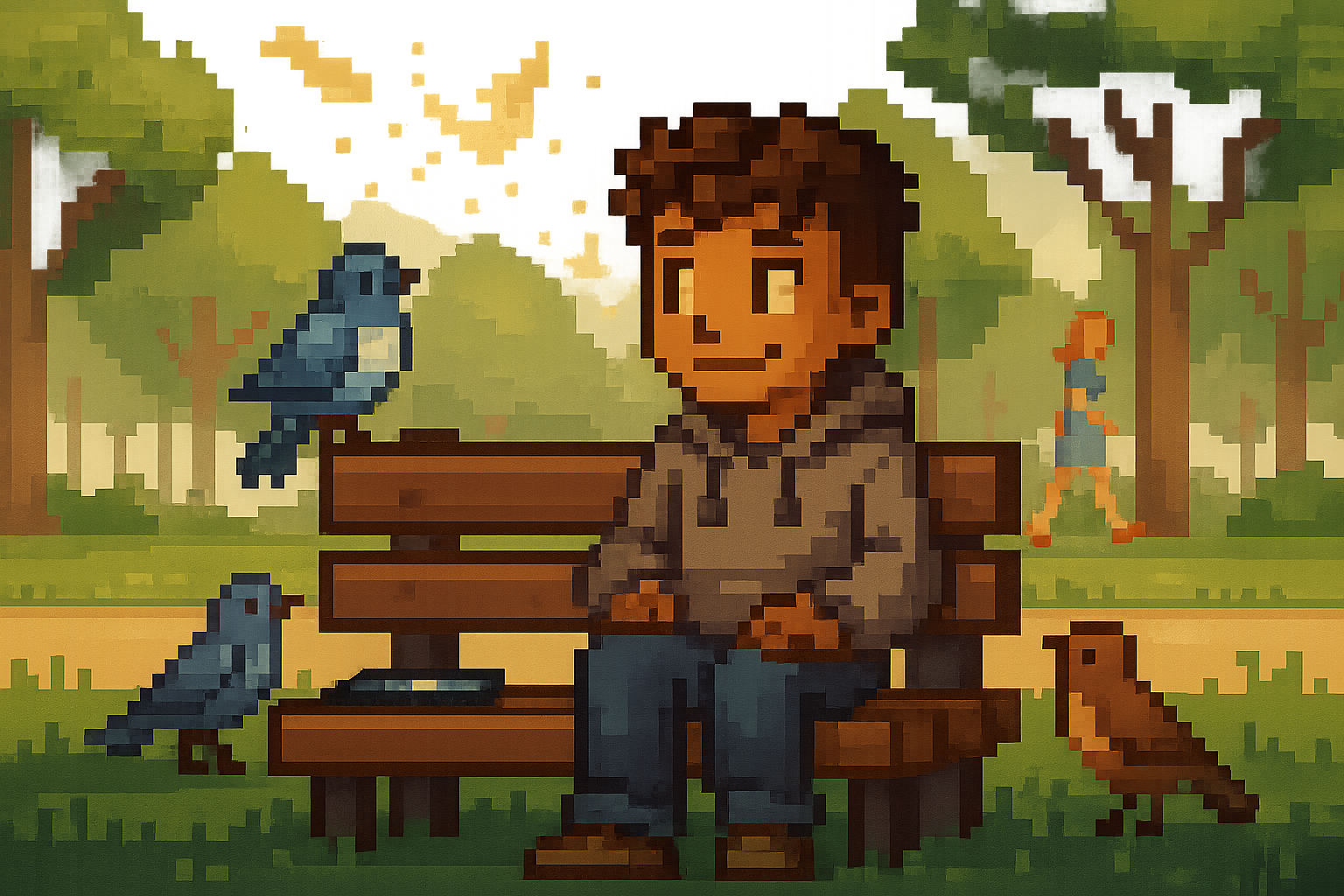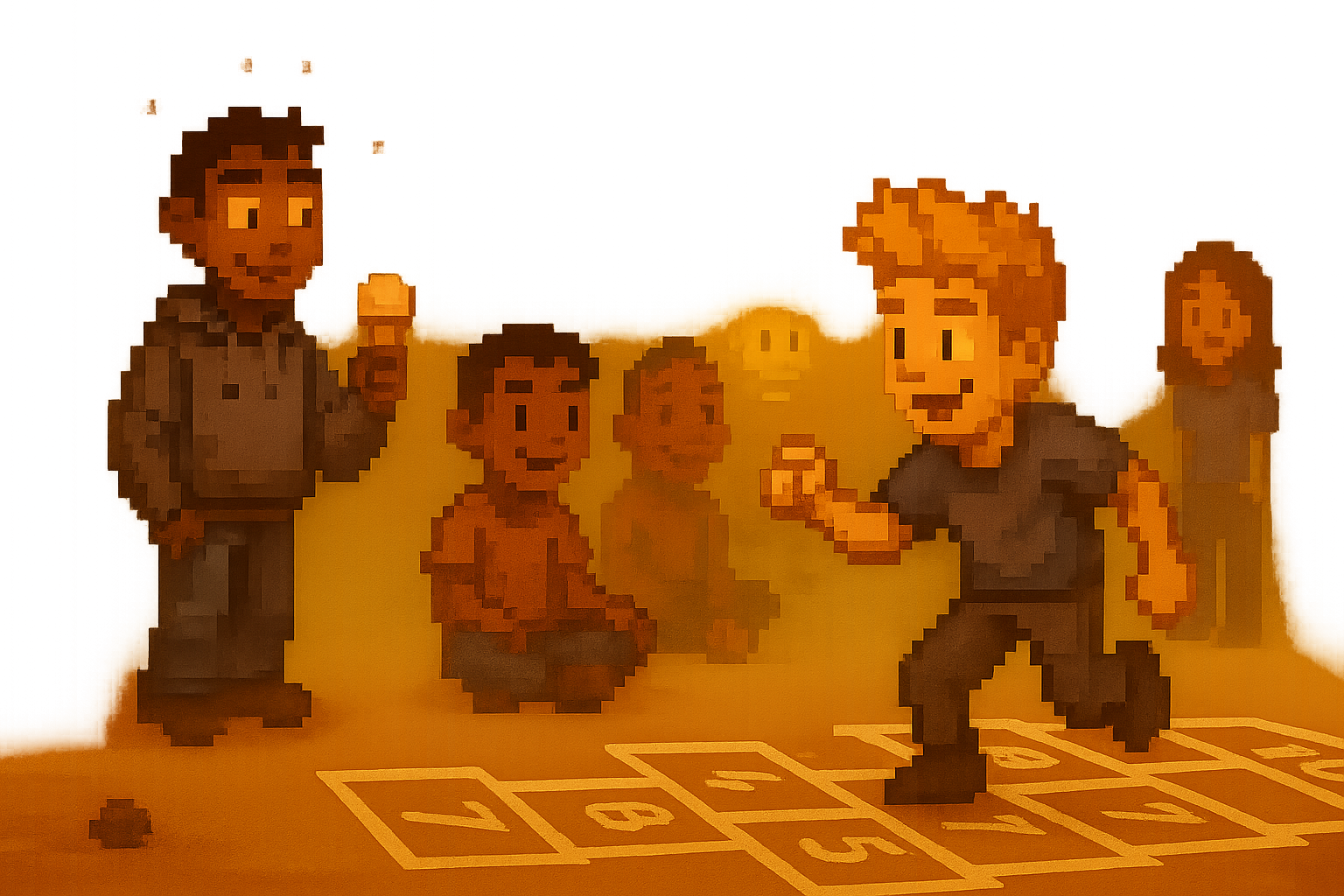
A global, cross-cultural exploration of how people want to interact with Artificial Intelligence; not just through screens, but through presence, care, rhythm, and respect.
This exploration began with a simple provocation: what might intelligent systems look like if they were built not just to inform or automate, but to accompany? Drawing from Global Dialogues - a vast collection of participant reflections from over 70 countries - I set out to understand how people experience the emotional, social, and sensory presence of AI today, and what they hope it might become.
Rather than treating these responses as mere data points, I listened to them as stories: stories of loneliness and ritual, of distraction and desire, of technology that feels both helpful and hollow. What emerged is a compelling tension. Across cultures and contexts, people are asking for more than speed or efficiency. They want systems that know when to pause. That recognize silence. That respect the rhythms of human life.
This project attempts to interpret that tension. Through narrative, quote, and design provocation, I explore how alternative interfaces - those that move through touch, sound, breath, or scent - might better meet people where they are. It is not a forecast, but a framework. Not a conclusion, but a question: What if AI could listen with more than language? What if it could support how we breathe, gather, and relate?
Act 1:
The interface we inherited.
We built AI to be efficient. Fast, scalable, always on.
But it was never asked to wait. To pause. To hold.
So it moves quickly - but without us. Even when it helps, it passes by untouched.
If AI starts taking the place of human companionship in our day to day lives, humans will eventually not be needed for anything.
Real quote from GD3 when asked about a scenario in which AI becomes primary human companion “these intimate AI relationships are not real people,”
Real quote from GDAI might get better at mimicking feelings and handling more data, but those emotions will always be programmed, not genuinely experienced.
Real quote from GD4 when asked about limits that should be placed on AI providing deep emotional connection or companionship.Old people would be more lonely, and be taken care of by high-tech medical systems,”
Real quote from GDWe inherit a technology culture that prizes efficiency over intimacy. The interface we know is one that often nudges us to glance down at our phones, even when a loved one sits right across from us. One Global Dialogues participant put it bluntly: “We will have many more distractions and apps trying to steal our attention” if AI continues on its current path (GD3, Nigeria, Male, 18–24). In living so hyper-connected, we risk feeling disconnected – present online, but absent in the here and now. Even when our devices do help us, they move ahead on autopilot, completing tasks for us but leaving us oddly untouched. Even when helpful — not with us.
Our “sense of togetherness” is at risk if advanced tech encourages us to perform our “usual rituals” or social activities alone, as a mere time-saving formality, “which will lack the basic sense” of community those traditions are meant to foster.
Despite differences in cultural context, the voices converge on a common theme: human attention and emotional presence are at stake. People worry about losing the real moments of connection – the eye contact, empathy, and understanding that come from human presence – if AI absorbs all our social energy.
A heartfelt push-and-pull surfaced in the Dialogues reflects what researchers have begun calling an “Emotional AI Paradox”: globally, 55% of people say they are concerned about forming intimate connections with AI, yet nearly half are already using AI for emotional support on a weekly basis. Our collective ambivalence is clear – we crave the warmth and attention that AI seems to offer, but we’re uneasy about what it means for our humanity.
—-
I believe that from here, there’s two paths we can take as designers and technologists to mould the future of AI - which will very clearly mould the future of our coming generations.
I took the creative liberty to illustrate these paths through the following few stories.
Advances in AI and the strategies of Big Tech are poised to reshape how we focus, socialize, and live. Here we explore two contrasting futures over the next 5 and 10 years:
Scenario 1, where AI and tech continue on their current trajectory of maximizing engagement (the status quo attention economy), and
Scenario 2, where we intervene early to design AI for presence and well-being rather than constant capture of attention. I forecast implications for human attention span, social connection, connection to nature, and physical well-being under each scenario, using data-driven trends to ground these speculative stories.
Act 2:
The World at a Fork
Scenario 1:
The Status Quo, i.e.
The Attention Economy
In this future, AI and big tech go on unchecked continuing to optimize for user engagement and screen time. By 2030 and 2035, digital immersion reaches unprecedented levels. The world is hyper- connected but often distracted and isolated – people’s attention spans dwindle, face-to-face social ties fray, nature feels ever more distant, and physical health bears the strain of ubiquitous screens. These effects span globally, though with variations by age and region, as technology permeates every corner of life.
2025
Anthony, 23M, lives in an urban city.
He pays WAY above the country average in rent so he can enjoy everything that the city has to offer. However, he is perpetually online and rarely goes out to enjoy offline connection.
He has a great support system in his friends, family, and loved ones.
GD4, Male, 18-25, 58% say they never/rarely lack companionship)However, he does solicit occasional emotional support from AI, even in instances where companionship has been available from his friends and family.
GD4, Male, 18-25, 55% say human companionship was mostly/completely available)Anthony’s life is saturated with AI-curated media and apps vying for his attention. Like 80% of his peers, he notices AI systems every single day in everything from social feeds to smart assistants. He’s more excited than concerned about this ubiquity, and it shows: he’s perpetually online.
On an average evening, Anthony doomscrolls through algorithm-tailored videos, chats with a witty AI bot, and queues up a personalized playlist, all at once. It’s normal in 2025 – people worldwide already log ~6 hours 40 minutes of screen time per day, and Gen Z often pushes 9 hours. Anthony is no exception; he’ll stay up past midnight clicking recommendations. Attention spans are starting to fray under this constant stimulation, but in 2025 that concern barely registers amid the buzz.
(most 18–25M feel equally or more excited than worried about AI in daily life【37†)2027
The attention economy has tightened its grip.
Anthony’s devices are even more immersive – he now wears lightweight AR glasses that overlay endless content into his field of view. It’s great for convenience (notifications float before his eyes, AI tutors him on the fly), but it also means distraction is constant.
Anthony often finds himself in a state of “continuous partial attention,” juggling pings and feeds without deep focus. And socially, a subtle isolation is creeping in. In 2027 he realizes he hasn’t seen his closest friend in person for weeks, even though they message daily. Why go out when entertainment and even emotional support are available on-demand at home?
GD1 participant, “people could start relying more on AI technology for companionship rather than human companionship.”2030
The dystopian hints of the late ‘20s have deepened into societal norms. Anthony is now 28, and he can barely recall life before omnipresent AI.
Digital immersion is complete – most of Anthony’s waking hours are spent interfacing with some form of screen or AI.
The concept of boredom, of unscripted downtime, has almost vanished. And with it, something else has eroded: meaningful human interaction.
AI mediates virtually everything. He works from his apartment, rarely needing to leave – groceries, medications, even social services are delivered via automated systems. He has a handful of virtual friends he interacts with in immersive XR chatrooms, but he hasn’t physically touched another person (aside from maybe a quick handshake or medical exam) in who knows how long. Human contact has become oddly optional.
GD participant, “People will lose the ability to forge human relationships and connections… [they will] use AI as substitutes for parents, friends, romantic partners, and children,”Let's begin with hearing some real stories.
I understand that the picture I just painted is extremely bleak, and it might not be the only possibility, but it definitely is the most probable one if what we are currently seeing in Big Tech continues to trend.
The average consumer - however - is seemingly more and more displeased by the direction in which this is going.
As much as I want as little time with humans personally, we would be erasing humans unique ability to bond with each other and help each other if we had an easy out with AI partners.
AI should not be our emotional anchor.
(GD3)Here’s the silver lining: People are really excited about AI! Just not the way it is presented to them currently.
From GD3:So then,
How Might We alter the use of AI technology to increase a human’s presence in their life rather than taking away from it? Allow me to reintroduce the future.
Do you think the increased use of AI across society is likely to make your cost of living better, worse or stay the same in the next 10 years?
Do you think the increased use of AI across society is likely to make the amount of free time you have better, worse or stay the same in the next 10 years?
Scenario 2:
Designing for Presence
In this more hopeful future, society takes deliberate action starting in the mid-2020s to redirect AI and technology design toward enhancing human presence, rather than hijacking attention. By 2030 and 2035, we still enjoy the great benefits of AI – productivity, convenience, knowledge – without letting it consume our every waking moment.
2025
Anthony begins to sense the need for a healthier tech-life balance. He’s still surrounded by the same gadgets, but small shifts are happening in how they’re used
He feels supported by both his human friends and gentle AI nudges that encourage real-world interaction.
Crucially, early signs of an ethos shift are emerging. A handful of tech companies and policymakers begin discussing guidelines to curb the most toxic attention traps.
AI is increasingly designed to facilitate human-to-human moments instead of replacing them.
2027 and on
New policies – think an “Attention Wellness Act 2027” – encourage platforms to minimize addictive dark patterns. Big Tech, facing public pressure, introduces features to promote breaks and interpersonal connection. Anthony’s world reflects these changes.
Alternative forms of interaction with AI are introduced into the market. Designers use haptics, sound, and smell to increase interactions outside of simple screens.
Anthony’s neighborhood has a new installation where people are encouraged to stop and play HopScotch, but with a AI twist.
AI is still very present, but in the background as it encourages and improves Anthony’s day to day life.
Anthony has never been a good cook, but with his Kitchen Assistant, he’s able to create great meals without having to ever look at a screen. Perfect for his date nights and potlucks as well!
Act 3:
A Different Design Imagination
Like any good play, its essential to have a final act to bring the (data) story together.
Alongside human connection, a recurring theme in the Global Dialogues is harmony with the natural world and with our own bodies. Participants across regions emphasized that the future they want from AI is one where technology and nature are not at odds. There is a clear desire to ensure advanced AI doesn’t come at the cost of environmental health or human wellness. In fact, many see technology as a double-edged sword: it could either accelerate problems like climate change and cultural homogenization, or, if guided correctly, help solve them. For instance, respondents outside the Western world voice strong concerns that AI might erode cultural and ecological diversity, unless we consciously design systems to respect local traditions and environments.
This work is meant to be a thought exploration. My goal is nudge other designers and technologists to think about alternative forms of interaction. In that effort, here’s questions I am really interested in finding answers to:
We each have daily or weekly rituals (coffee in the morning, family dinners, exercise). How might AI honor those rhythms - anticipate them, support them, or even gently challenge them - to help you live more mindfully?
Imagine AI that communicates through touch, sound, or scent instead of a screen. Would that kind of subtle but omnipresent existence push you towards or away from AI? IF it becomes lesser obvious that you are interacting with it - does that make you nervous?
And with this, I invite you to take these sparks and build. The next Act is yours.









